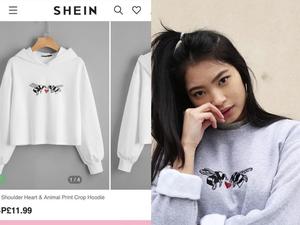Walking the line between inspiration and imitation in fashion
There is a fine line between inspiration and imitation, which we all too often see crossed.

If it happens to you, what can you do about it? Conversely, how do you make sure you’re not getting too close to somebody else’s IP?
Counterfeiting is big business in the UK.
Often linked to organised crime networks, people trafficking and slave labour, it is a highly dangerous criminalised industry, and it costs UK consumers hundreds of million pounds per year.
Counterfeiters generally (although not exclusively) target well-known designer brands, manufacturing knock-off products either in the UK or overseas and then selling them in city markets across the UK or online.
The targeted brands will often have online and offline IP strategies in place to tackle this type of infringing activity and are well equipped to take action against it.
However, there is another worrying trend in fashion affecting smaller brands or young designers, the true innovators of fashion.
Some fast-fashion retailers are stealing designs from smaller fashion brands or fashion students, and retailing the (usually inferior) copycat products at a much lower price point.
For these designers, the idea of pursuing legal action against a large party (or indeed any party) for infringement may seem impossible either because of the perceived high cost of doing so, or the concern that the legal action will not be successful.
Many young designers have taken to social media platforms such as Instagram to name and shame retailers who have copied their designs.
Emma Warren Designs posted on Instagram in August 2020 when online fast-fashion retailer, Shein, had purportedly copied one of her designs.

The Instagram post showed her design next to the Shein design highlighting that the designs were practically identical. Shein was selling its product at a much lower price point.
Other Instagram Accounts such as @Diet_Prada have taken to regularly naming and shaming copycat culprits.
While the negative PR can be off-putting for copycats, it doesn’t ultimately deter them.
So, what can be done to help protect against copying?
IP Protection and Strategy
IP comes in lots of different forms. Some types of IP are automatically created and others you need to register to obtain the IP right.
The main registered IP rights in fashion are trade marks (including brand names and logos) and registered designs.
The main unregistered rights in fashion are rights acquired through use , unregistered design rights and copyright.
All of these different IP rights protect different aspects of the brand and product design.
Not only is it important to understand which IP right is best, it is also important to ensure the scope of the IP right is as broad as it can be, particularly when it comes to registered designs.
For this, it is always best to get professional help rather than trying to navigate it alone.
Here are some basic tips to get your IP in good shape:
- For unregistered design rights and copyright, it is essential to keep accurate records relating to the design history of the product. Ideally, this should include all inspiration for the design and how the product was inspired, the date on which the design was first conceived, the date the first prototype was created, a history of any modifications and details relating to any disclosure of the design.
- Consider becoming a member of ACID. ACID offers a range of different memberships, including student membership and allows you to store your design documents in one place, as well as providing helpful information.
- Be careful who you share your ideas with…think about whether you will need to put a Non-Disclosure Agreement (“NDA”) in place when sharing designs with retail partners, suppliers or manufactures and always ensure you get professional advice in relation to any contracts you are asked to sign.
- IP rights don’t enforce themselves. Once IP is in place, it is advisable to have a sensible strategy around the enforcement of those rights, which will work with the budget and ambitions for the brand.
- Monitor known copycat culprits and be quick to act when you spot something that looks too close to your design.
- Don’t be afraid to seek legal advice! The right advisor should be able to tell you whether you’ve got a good case or not without charging you and will also be able to set out the associated costs of taking any action in a clear step-by-step format to make it easy to budget for.
- Formal legal action should be a last resort but very often won’t be necessary. Legal enforcement does not always mean high cost.
- Look for fashion IP specialists or those with experience in helping start-ups when selecting a legal advisor.
Steering clear of being a ‘copycat’
You might not set out with the intention of copying some else’s design but here are some basic tips to help avoid being a copycat:
- Make sure you are using earlier design trends as ‘inspiration’ and make sure your design is sufficiently different from the original design.
- Make sure the product design has a different overall impression and that no singular element is directly copied from the original (unless that element is something generic such as having pockets on the back of a pair of trousers).
- Do some research! Even simple searches online can be enough to tell whether a brand name or design is already in use or protected by a third party.
- Seek professional advice if you’re not sure.
Slowly consumers are becoming more aware of this issue, and are also more interested in the origin and manufacturing history of the products they buy.
Customer attitudes to sustainability and fast-fashion are changing and, with this, the attractiveness of cheap copycat products might be waning.
However, it is unlikely to be a trend that disappears overnight and so it is important to continue to champion innovation over imitation within fashion and to take action against copycats.

